Situated to the south of the eastern Himalayas, Assam is surrounded by all the other north eastern states and also shares its international border with Bhutan and Bangladesh. It is the most accessible state of north east and serves as a gateway. The state is characterized by unspoiled natural beauty, teeming wildlife, verdant tea gardens, the Brahmaputra valley and a hospitable population. Hailed by Lonely Planet as the Best Wildlife destination, Assam is one of the last bastions of the one horned rhino, it is also home to the Hoolock Gibbon, the only ape in India, found in the jungles of Gibbon Wildlife sanctuary. It is here that you find the world’s largest river island, Majuli, which is also the seat of a distinctive Assamese culture and the place of neo-vaishnavism. Kamakhya temple in the city of Guwahati is known for its tantricism and is also one of the Shakti Peethas( one of the consecrated places of the goddess Shakti).
Sivasagar
Sivasagar, literally meaning ‘Ocean of Shiva’ is a town which displays history and mythology through its enigmatic palaces and temples. Previously known as Rangpur, Sivasagar was the seat of the Ahom kingdom. With the coming of the British colonialists, it was later turned into a major tea and oil centre. Rang Ghar (the dual-storied amphitheatre of the Ahom kingdom), the seven-storied Kareng Ghar and the eerie Talatal Ghar (which has an underground three-storied secret getaway) are the major attractions. Sivasagar shares a unique affinity with lakes and Lord Shiva. Borpukhuri (big pond) is the biggest of them. Others like Joysagar, Gaurisagar and Rudrasagar were built by Ahoms to honor parents. Famous temples like Sivadol, Vishnudol and Devidol lie on the bank of Borpukhuri. The 100 ft high 18th century Sivadol, dedicated to Lord Shiva, is the most sacred temple followed by Vishnudol (dedicated to Lord Vishnu) and Devidol ( dedicated to Goddess Durga.) Other places of interest include the Sivasagar Tai Museum, the Panidihing Bird Sanctuary, Charaideo (the first capital of the Ahom kingdom) and the Namdang Stone Bridge, Dilih Ghat and Ajan Pir Dargah.
Kaziranga National Park
Kaziranga is known globally for its one-horned rhinoceros population. It houses two-thirds of the world’s total rhinoceros population. Migratory birds, predators and game birds like Pallas’s Fish Eagle, Black-Necked Stork, Nordmann’s Greenshank, Eastern Imperial, Blyth’s Kingfisher, Wreathed Hornbill and Dalmatian Pelican also adorn Kaziranga. Located in the Golaghat district, Kaziranga has tall elephant grass and broadleaf forests surrounded by marshland. It is a biodiversity zone and was declared a World Heritage Site by UNESCO in 1985. A tiger conservation policy made Kaziranga into a Tiger Reserve also in 2006. Of the 35 species of mammals that Kaziranga houses, 15 have been declared endangered. Other famous mammals found here are the wild Asiatic water buffalo, swamp deer, gaur (Indian bison), barking deer and wild boar. The cat population of Indian tigers, leopards and fishing cats and reptiles like the reticulated Russell’s viper, rock python and lizards also inhabit the park.
Manas National Park
Spread across five districts- Kokrajhar, Chirang, Baksa, Udalguri and Darrang and extending up to Bhutan, Manas National Park covers 950 sq km. It is a UNESCO recognized Natural World Heritage Site. Manas boasts of three titles: Tiger Reserve, Elephant Reserve and a Biosphere Reserve. Manas National Park gets its name from the Manas River that runs along the park. The park has garnered worldwide reputation for housing endangered species like Roofed Turtle, Hispid Hare, Golden Langur and Pygmy Hog. The flora of Manas is unique in its own kind; with vegetation of sub-Himalayan, East Himalayan and the dense Assam valley amalgamating together. Indian tiger, Asian elephants, Indian rhinoceros, bisons, Asian water buffalos, clouded leopards, Asian golden cat, slow loris, sloth bears and black panthers are some of the most spotted animals in Manas. Manas also houses the endangered Bengal Florican, giant hornbills, Brahminy ducks, jungle fowls, Kalij Pheasants, egrets, fishing eagles, serpent eagles, scarlet minivets and ospreys. Unlike the Kaziranga National Park, here tourists can enjoy many adventure activities like nature trails and treks and river rafting. Heavy rainfall forces the national park to remain closed from May to September.
Majuli
Majuli is the second largest river island in the world and the cradle of Neo-Vaishnavism in the state. The island is famed for its several satras (de-centralized monasteries) that were established by the renowned Assamese cult figure Srimanta Sankardeva. Today, these satras follow the tradition of singing bargeet (devotional songs). Most residences in Majuli are stilt houses called chang ghar. Almost every resident is an artist on their own right, following the primordial practices of traditional arts, dance drama and devotional music. Ras Mahotsav or Ras Lila is the main cultural attraction of Majuli, which draws in visitors from across the world. Home-stays are the most popular mode of experiencing rural living in Majuli. The ethnic food here is particularly something to look forward to, especially the variety of fish dishes. Going for boat rides in the mighty Brahmaputra River and bird watching will definitely keep you engaged during your stay on this island. It’s best to avoid the monsoon season. September to March is the best time to visit Majuli.
Tezpur
An ancient city, a cultural stronghold, a centre of education and research – Tezpur has it all. Situated on the banks of the Brahmaputra, Tezpur is called the ‘Cultural Capital of Assam’. It is believed that a battle was fought here in Tezpur between Lord Krishna and King Bana for the rescue of Krishna’s grandson Aniruddha. Hence the name Tezpur (‘Teza’ in Sanskrit is blood, while ‘Pura’ means town). Tezpur is the land of many firsts – the first historical record of Assam in the form of ninth century rock inscriptions, the first power station in the north-east, the first cinema hall of the north-east (Jonaki) and the first film studio in the north-east (Jyoti Chitraban). Tea gardens and indigenous industries contribute significantly to its economy. The town is an important transit point to popular destinations like Kaziranga National Park, Nameri National Park and Arunachal Pradesh. Tezpur has its own fair share of popular tourist destinations as well like Agnigarh (the hillock on which King Bana imprisoned his daughter Usha in a fortress), Cole Park, Kolia Bhomora (the 3.015 km long Bridge linking Tezpur with Nagaon), Padum Pukhuri, Da Parbatia, and Bamuni Pahar.
Dibrugarh
Dibrugarh, the ‘tea city of India’ was the bastion of the Ahom dynasty during the Ahom-Sutiya war. It is quite possible the town got its name from Dibarumukh where the Ahoms were camped. Another theory is the construction of a fort on the banks of the Dibaru River when the British came to occupy [Dibaru + Garh (fort)] it. Dibrugarh’s economy primarily depends on tea gardens, oil and timber industries. Lately, Dibrugarh has grown considerably because of ongoing projects like Brahmaputra Cracker and Polymer Limited and the longest railroad bridge Bogibeel. Ahoms are the dominant community here and majorly responsible for the production of woodwork, including cane and bamboo furniture, Assam silk, gamosa (traditional headscarf/hand towel) and mekhela chador (traditional silk wraparound of the Assamese women). Dibrugarh boasts of several tourist attractions, but the most significant are the Dibru Saikhowa National Park, The Dehing Patkai rainforest, Barbarua Maidam, Koli Aai Thaan, Namphake Village and Dehing Namti Satra.
Pobitora Wildlife Sanctuary
Located 30 km east of Guwahati, the Pobitora Wildlife Sanctuary is another natural habitat of the one-horned rhinoceros. It is an hour drive from Guwahati along the Brahmaputra River and Mayong, (the village of ‘black magic’). Declared a wildlife sanctuary in 1987, the sanctuary is home to about 93 rhinos. Other wildlife like Asiatic buffalo, barking deer, wild boar and leopard also live here. Pobitora hosts over 2000 migratory birds in winters and attracts a wide variety of reptiles during the monsoon season. Running out of space, a translocation was undertaken to trans- six rhinos from Pobitora to the Manas National Park. The main attraction of the Pobitora Wildlife Sanctuary is the jeep safari deep through the range.
Nameri National Park
The Nameri National Park houses around 315 species of birds, over 30 species of mammals and over 20 tigers. Nameri takes pride in being the custodian of the famed Golden Mahseer or the ‘Tiger of the Himalayan Rivers’. The Jia Bhorolu river wades majestically through the park. Nameri National Park was officially set up in 1998 and shares boundary with the Pakhui Wildlife Sanctuary on the northern side. The flora of Nameri comprises of semi-evergreen forests, moist deciduous forests and grasslands. Rafting and trekking are the two most widely famous activities of the park. Camping in the banks of the Jia Bharalu has been a major attraction.
Orang National Park
Orang National Park lies at a distance of about 140 kms from Guwahati. Situated on the northern banks of the Brahmaputra, Orang is a diverse landscape of forests, grasslands, marshes and streams. It is famous for the great Indian one-horned rhinoceros, thus earning the title ‘mini Kaziranga’. Other mammals found are elephants, wild buffalos, pygmy hogs, wild boars, hog deer, rhesus macaque, Bengal porcupine, small Indian civet and the Royal Bengal Tiger. Assemblage of birds like hornbill, Pallas’s fishing eagle, rudy shelduck, kingfisher and Bengal florican and over 50 species of fish and reptiles is found here. The best time to visit the park is between October and April. The park remains open from 7:30 am to 9:30 am and again from 2:00 pm to 3:00 pm.
Tours
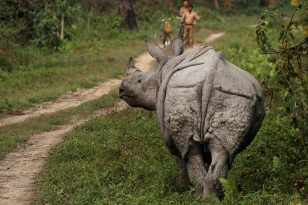
Kaziranga National Park Wildlife Tour
The north-eastern state of Assam opens up a whole new world for wildlife lovers, poetically removed from any wildlife tour that one may have experienced previously.
Price: £ 1750
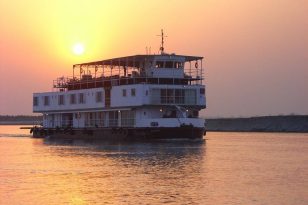
Brahmaputra River Cruise
This cruise gives an ideal introduction to the Brahmaputra, one of the major rivers of Asia, that cuts through 4 countries namely China, India, Bhutan and Bangladesh.
Price: £ 3127
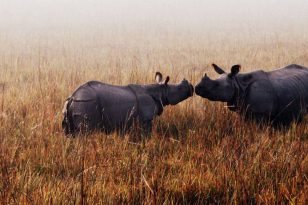
Luxury Wildlife Tour of Assam
Assam, located in North East India is blessed with tropical jungles, grasslands and huge forest cover resulting in it being a haven for rare and endangered bird and wildlife.
Price: £ 2450
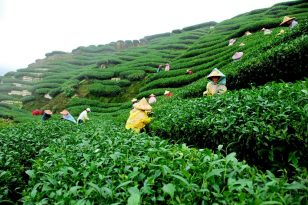
Tea Garden & Horse Riding Holiday in Assam
Assam is the only place in India, other than Rajasthan where Horse Riding Holidays are offered. And what perhaps could be a better way of exploring the beautiful Brahmaputra valley, the lush green tea gardens and enjoy a charming stay in the chang bungalows reminiscing the colonial days.
Price: £ 2500
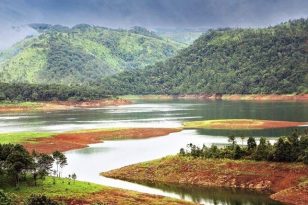
15 days North East India tour: Living Root bridges, Rhinos, Tea & Tribes
In this tour you will visit the North East Indian states of Assam. Meghalaya and Nagaland. The tour begins in Guwahati, the gateway to North East India and also the most important commercial centre of the region.
Price: £ 2450
